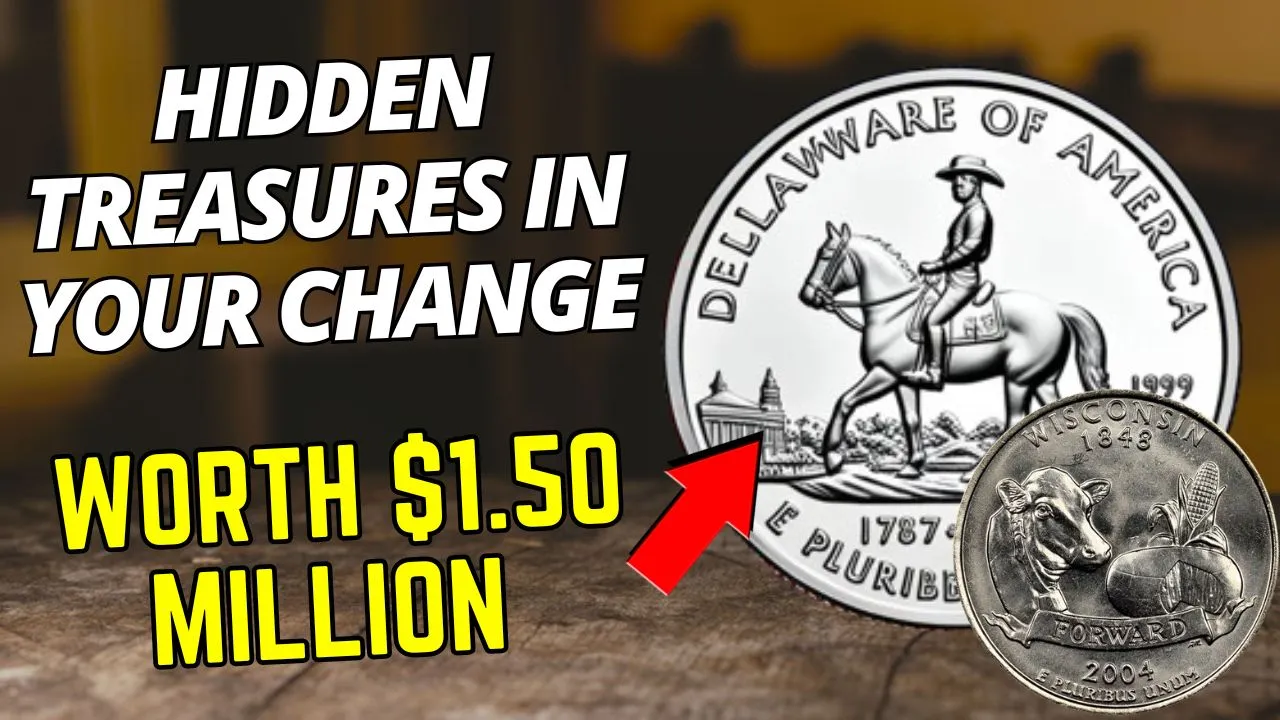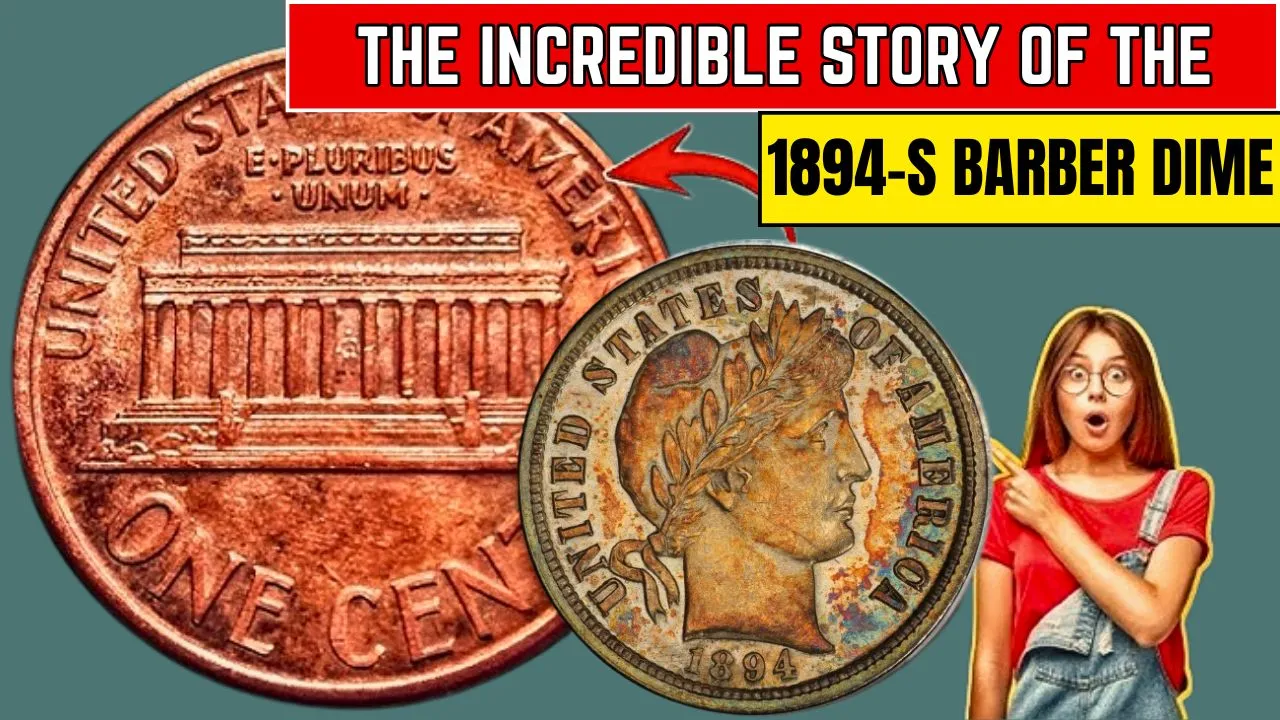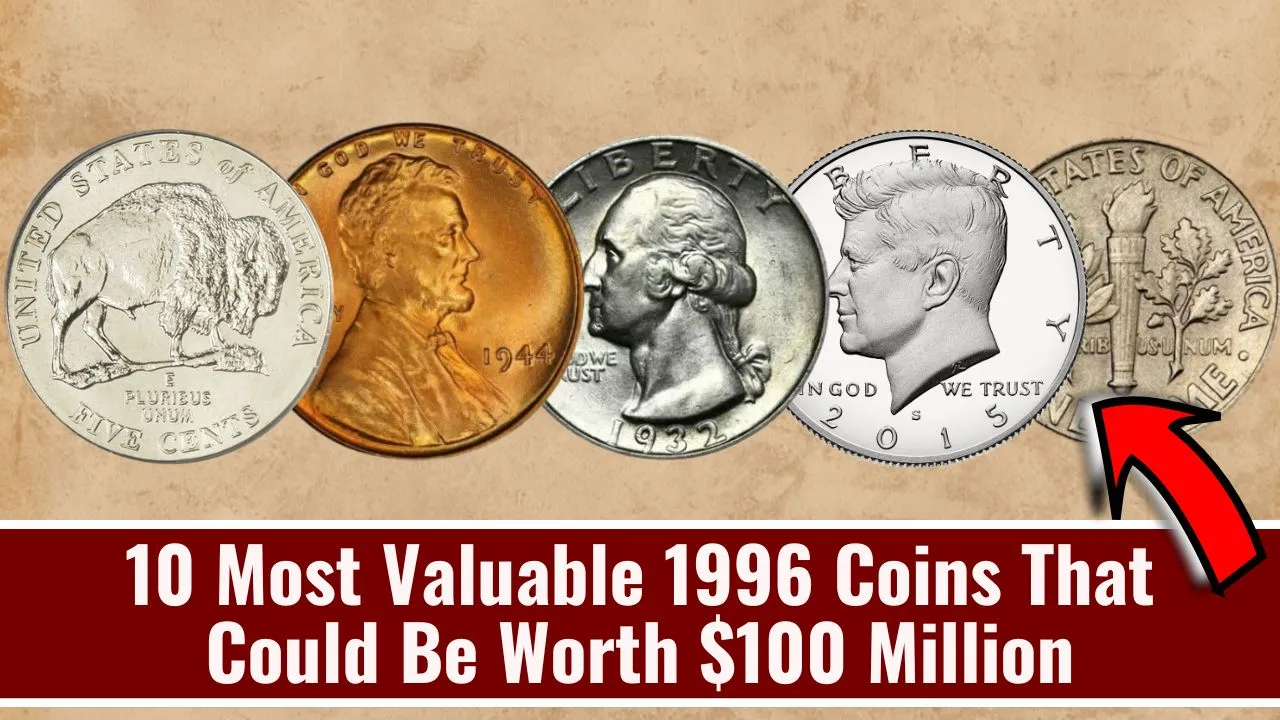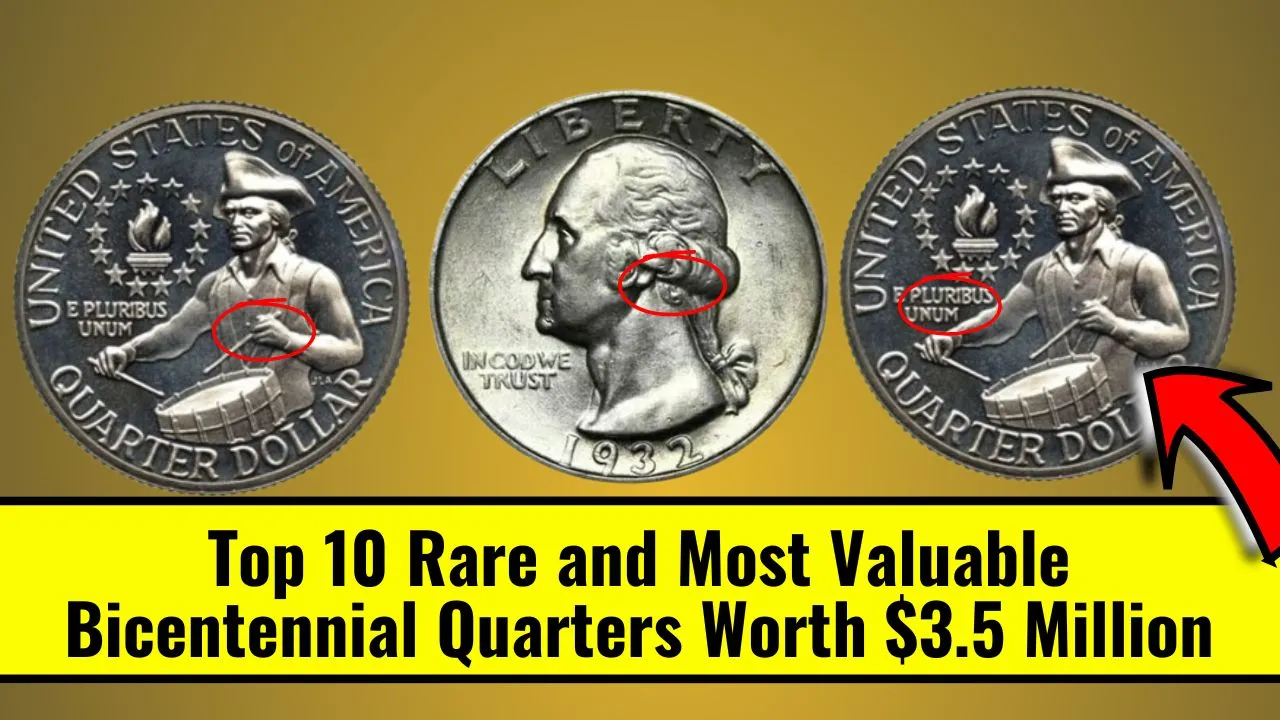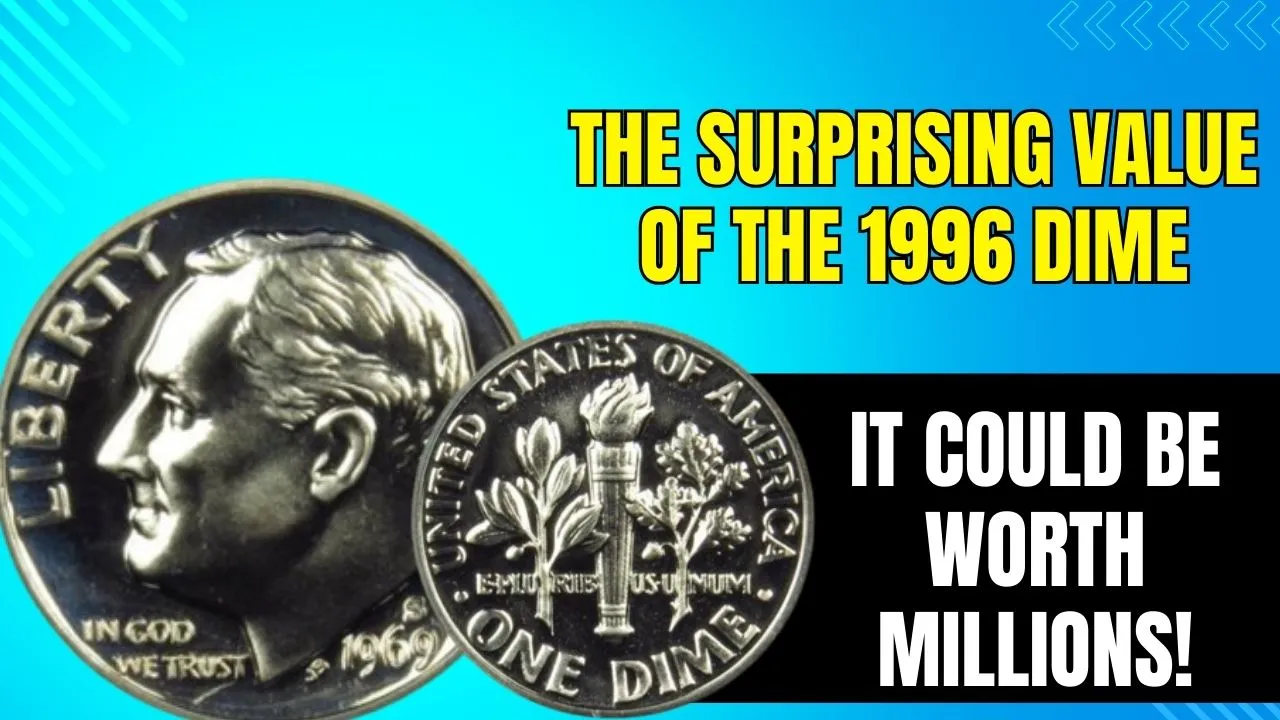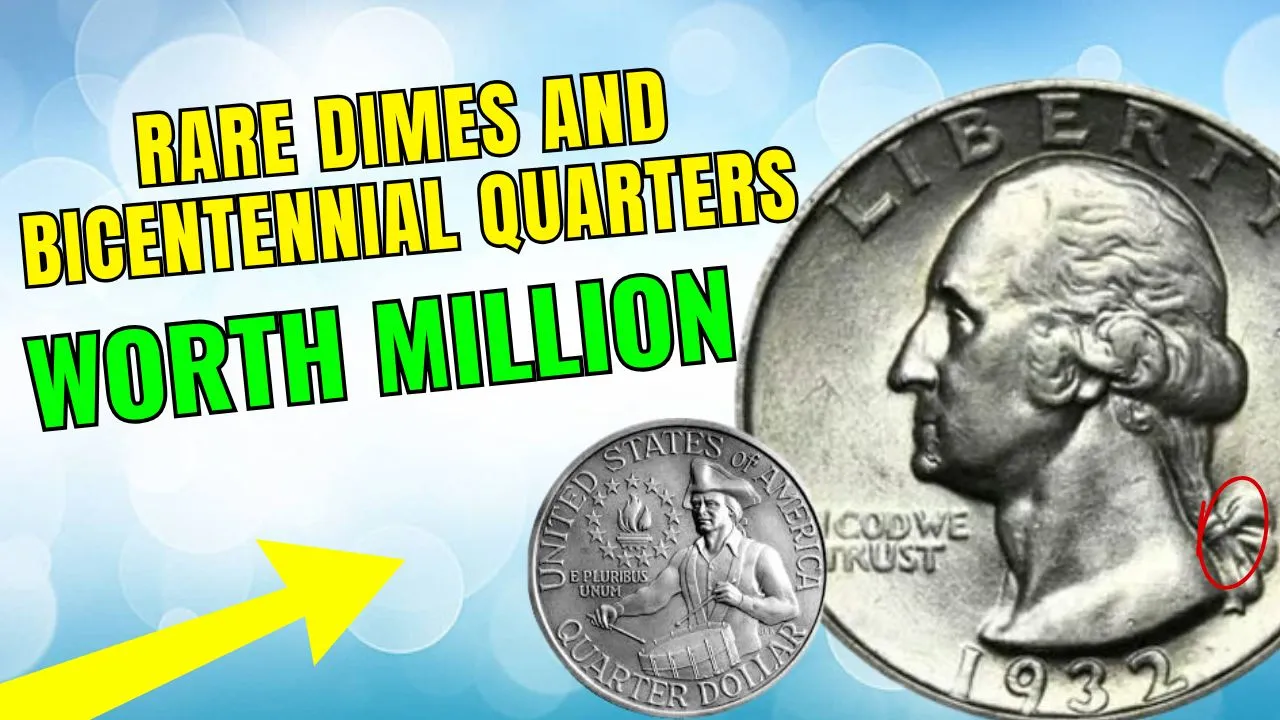Rare State Quarters: For most of us, a quarter is just a quarter—25 cents to toss into a vending machine or parking meter. But for collectors, some state quarters are far more than their face value. Released as part of the 50 State Quarters Program from 1999 to 2008, these coins celebrate the history and culture of each U.S. state.
Among these coins are rare state quarters that, due to minting errors or other unique characteristics, have become valuable treasures worth thousands—or even millions. Whether you’re a seasoned numismatist or a casual collector, these five rare state quarters could be worth more than you imagine.
Quick Overview of Rare State Quarters
| State Quarter | Unique Error/Feature | Estimated Value |
| 2004-D Wisconsin Quarter | Extra Leaf Error | Up to $1.5 Million |
| 1999-P Delaware Quarter | Spitting Horse Variety | Up to $10,000 |
| 2005-P Minnesota Quarter | Extra Tree Error | $1,000 – $5,000 |
| 2000-P South Carolina Quarter | Broadstruck Error | $500 – $3,000 |
| 2008-D Hawaii Quarter | Inverted Design Error | $1,000 – $10,000 |
1. 2004-D Wisconsin State Quarter (Extra Leaf Error)
The 2004-D Wisconsin quarter is one of the most famous examples of minting errors. Known as the “Extra Leaf” variety, this coin features an unexpected extra leaf on the corn depicted on its reverse side.
What Happened?
This error was the result of a die modification that unintentionally added an extra leaf to the design. It was discovered shortly after the coin’s release, sparking excitement in the coin-collecting world.
How Much Is It Worth?
While many collectors are willing to pay thousands for this coin, the highest price ever recorded for a 2004-D Wisconsin Extra Leaf quarter was a staggering $1.5 million. Condition plays a big role, so coins in near-mint condition fetch the highest prices.
2. 1999-P Delaware State Quarter (Spitting Horse Variety)
The 1999-P Delaware quarter marked the start of the 50 State Quarters Program, making it historically significant. But what really makes this coin stand out is the “Spitting Horse” variety.
The Error
This rare feature is caused by a die crack that makes it look like the horse on the coin’s reverse side is spitting. Though unintended, this quirk gives the coin a unique appeal.
Its Value
Coins with the Spitting Horse error can sell for up to $10,000, especially in mint condition. Its blend of historical importance and rarity makes it a coveted item among collectors.
3. 2005-P Minnesota State Quarter (Extra Tree Error)
Minnesota’s quarter design highlights the state’s natural beauty with an image of trees and a lake. However, the “Extra Tree” variety features an additional tree in the background that wasn’t part of the original design.
Why Is It Special?
This error occurred due to a die clash, causing the coin to display an extra tree. It’s subtle, but once spotted, collectors prize this variation for its rarity.
The Price Tag
The 2005-P Minnesota Extra Tree quarter can sell for $1,000 to $5,000, depending on its condition. Well-preserved coins or those with more prominent errors are worth the most.
4. 2000-P South Carolina State Quarter (Broadstruck Error)
The 2000-P South Carolina quarter stands out due to a striking minting error called “Broadstruck.” This occurs when a coin is not properly centered during the minting process, resulting in a distorted, larger-than-normal coin.
What’s on the Coin?
The South Carolina quarter features a palmetto tree and the state’s motto, “While I Breathe, I Hope.” The Broadstruck error gives the coin an unusual appearance, making it a must-have for collectors who love minting anomalies.
How Valuable Is It?
Depending on the severity of the error and the coin’s condition, Broadstruck South Carolina quarters are valued between $500 and $3,000.
5. 2008-D Hawaii State Quarter (Inverted Design Error)
The 2008-D Hawaii quarter is a favorite among collectors for its historical significance and a rare error called the “Inverted Design.” This error occurs when the die used to mint the coin is misaligned, causing the reverse design to appear upside down.
What Makes It Unique?
The coin features King Kamehameha I, a key figure in Hawaiian history, with the state’s islands in the background. The inverted design error makes this already meaningful coin even more intriguing.
Its Value
Collectors are willing to pay between $1,000 and $10,000 for a 2008-D Hawaii quarter with the Inverted Design error. Coins in mint condition with more pronounced misalignments fetch the highest prices.
What Determines the Value of Rare State Quarters?
Several factors influence the value of rare state quarters:
- Rarity: Coins produced in limited quantities or with unique minting errors are highly sought after.
- Condition: Coins in near-mint condition are more valuable than worn or damaged ones.
- Historical Importance: Quarters that symbolize significant events or figures often fetch higher prices.
- Demand: The popularity of specific errors or designs among collectors can drive up prices.
FAQs About Rare State Quarters
- What are rare state quarters?
Rare state quarters are coins from the 50 State Quarters Program that feature unique minting errors or limited production. - How do I identify a rare state quarter?
Look for anomalies like extra design elements, die cracks, or off-center strikes. A professional appraiser can help confirm its rarity. - Can I still find rare state quarters in circulation?
While most rare quarters have been collected, it’s still possible to find one in your change. - What is the most valuable state quarter?
The 2004-D Wisconsin Extra Leaf quarter is one of the most valuable, with one example selling for $1.5 million. - Where can I sell a rare state quarter?
You can sell rare quarters through online marketplaces, coin dealers, or auction houses.
Final Thoughts: Don’t Overlook Your Spare Change
Rare state quarters are more than just collectibles; they’re historical artifacts that tell fascinating stories. From the 2004-D Wisconsin Extra Leaf to the 2008-D Hawaii Inverted Design, these coins have captured the imagination of collectors worldwide.
If you have spare change lying around, take a closer look—you might just find a hidden gem. Whether you’re starting a collection or hoping to strike it rich, the world of rare state quarters is full of surprises.
Do you have a rare coin story to share? Let us know in the comments! Don’t forget to share this article with fellow collectors and inspire them to check their own coin jars.

